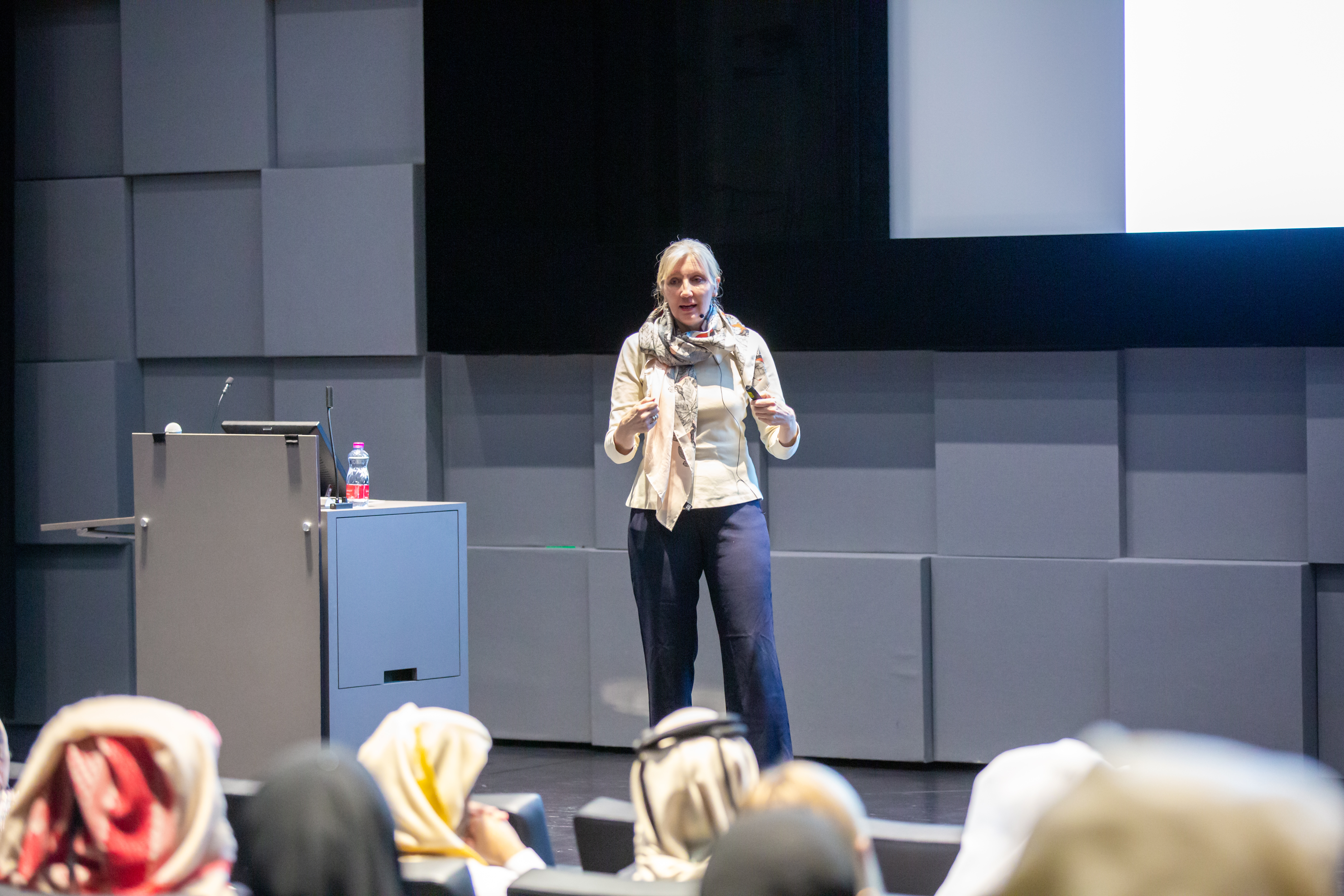Global Communications Executive Shares Industry Insights with NU-Q Community
Christine Heenan, founder and president of Clarendon Group, discussed “How a Journalism Degree took me to the White House and Harvard” during a recent community talk. The event was an opportunity for Heenan to reflect on the link between her career and journalism degree, and extrapolate critical lessons for a new generation of journalism hopefuls.
“For a journalism graduate, Christine did not use her degree to follow a traditional route for her career,” said Mary Dedinsky, associate professor and director of the Journalism and Strategic Communication Program at NU-Q, who introduced Heenan.
“I would say she is living proof of what I tell anyone interested in a journalism and strategic communication degree: it is the most versatile degree—it is a degree that will take you anywhere you want to go because you learn critical thinking skills, and how to communicate in any medium out there.”
Addressing a crowd of NU-Q students, staff, and faculty, Heenan prefaced her talk with an outline of the distinct chapters that helped her shape a career that spans 30 years—since graduating from Boston University in 1990—and covers four primary fields: consulting, philanthropy, government, and higher education.
Assuming she would join fellow alumni at regional newspapers upon graduating, Heenan was instead able to turn a business strategy stint in Japan, during a semester off from college, into the beginnings of a long and multifaceted consulting career. Her newfound interest reached new heights when she attracted the attention of the Clinton Administration two years later, earning a job as a policy analyst at the White House.
It was not, however, until she received praise for drafting a radio address for the President on an emerging healthcare plan, and later transferring to the speechwriting office at the White House, that Heenan discovered her strengths and carved out a unique consulting portfolio in her areas of focus.
“What I learned was that the policy people knew policy options and angles and derivations very well. What they didn’t know very well was how to talk about it to people who didn’t think about policy every day,” Heenan said. The opposite, she explained, was also true; communications professionals are not able to lend their expertise in situations that delve into the specifics of a plan or policy.
“I realized I had found my niche. I was either a communicator with a deep interest in policy or a policy person who knew how to talk and write. But either way, I would say that dual passport has been the hallmark of my career and where I had been a differentiator,” Heenan told the crowd.
Upon this discovery, Heenan was able to use the skillset she acquired from Washington D.C.—a combination of policy, communications, politics, idea generation, and fast-thinking—to establish her own social impact strategy and communications firm, Clarendon Group.
Heenan also spent time at Harvard as vice president of public affairs and communications in and also at the Bill & Melinda Gates Foundation where she worked with Melinda Gates on women and girls’ education.
Heenan concluded her talk by sharing lessons derived from her journalism degree that still apply to established and emerging journalists in today’s climate. “Being well-trained to write and speak clearly is and will always be a differentiator,” Heenan told the audience while presenting the first lesson.
Other lessons included: separating the interesting from the important; finding an editor and avoiding taking criticism personally; cultivating sources by building a community and maintaining trust; and being prepared to pivot, or in Heenan’s words, “recognizing opportunity when it’s in front of you, or recognizing when an opportunity you’ve taken has become stale or beyond its useful life.”
Heenan also delivered a masterclass on crisis communication for media and business experts from the local community, in which she summarized the communications practices that proved most successful in dealing with a crisis during her career.
“There are two forms of scrutiny in any crisis: the first is the cause or instigation of the crisis itself, and the role your organization plays in it; and secondly, whether your organization reacted and communicated in an appropriate manner,” Heenan told the class, adding that the latter is often the source of most problems. “The vast majority, and also the extension, of reputational damage in crises almost always comes from how an organization responds to a crisis as opposed to the underlying crisis itself.”
The class, which welcomed alumni from NU-Q’s executive education program, addressed a range of other topics, including the impact of digitization on response and mitigation strategies; the advantages of monitoring conversations online as crises unfold; and the importance of taking ownership by staying on the message, using the appropriate tone, and issuing a written response before accepting any screen or audio time.
